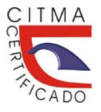Design of a hydrocarbon’s separator at the Transmetro Morón bus station
DOI:
https://doi.org/10.5281/zenodo.14941637Keywords:
hydrocarbon, hydrocarbon pollution, hydrocarbon separatorAbstract
Introduction: hydrocarbon spills are one of the main sources of soil and water pollution, causing disturbances in ecosystems by affecting their structure and bioprocesses. Objective: design a class I hydrocarbon separator for the treatment of discharged and contaminated water in the washing plant of the Transmetro Moron bus station. Method: the research carried out is of an applied type and the methodological procedure of the study followed the indications of the Spanish Standard 858-1:2002 standard for the design, operation and testing of hydrocarbon separators and went through two moments: the determination of the volume and design of the settler and the determination of the volume and design of the hydrocarbon separator. Results: As a result of the study, the design of a class I hydrocarbon separator was achieved for the treatment of discharged and contaminated water, made of reinforced concrete, with a settling volume of 2.45 m3 and a separation volume of 2.59 m3 and a filter coalescing of corrugated PVC sheets, according to the indications of Spanish Standard 858-1:2002. Conclusion: The use of a class I hydrocarbon separator in the washing plant of the Transmetro Moron bus station has allowed the separation and collection of hydrocarbon waste that can harm the environment and has generated annual savings of 1,873,610 CUP.
Downloads
References
ACO Remosa. (2022). Separadores de hidrocarburos: principios, normas y marcado. RETEMA: Revista Técnica de Medio Ambiente, 356(239), 41-42. https://www.retema.es/actualidad/separadores-de-hidrocarburos-principios-normas-y-marcado-ce
Araque Arellano, M. (2022). El agua en la naturaleza. En: M. Araque Arellano (Ed.), Diseño hidráulico de plantas de tratamiento de agua potable, 15-24. Editorial Abya-Yala. https://doi.org/10.7476/9789978108208.0002
Asociación Española de Normalización y Certificación (AENOR). (2002). Norma Española UNE-EN 858-1:2002. Sistemas separadores para líquidos ligeros. Editora AENOR. https://pdf-to-word.tlum.info/download/pdftodocx
Cely Calixto, N. J., Carrillo Soto, G. A., y Bonilla Granados, C. A. (2022). Fundamentos de la contaminación de aguas subterráneas. ECOE Ediciones https://www.researchgate.net/publication/384868055_FUNDAMENTOS_DE_LA_CONTAMINACION_DE_AGUAS_SUBTERRANEAS
Córdova Medina, L. A. (2021). Diseño de la automatización del separador API para la recuperación de hidrocarburos refinados mediante Skimmer en Ecopetrol S.A. [Tesis en opción al título de Ingeniero Electromecánico, UAN, Santa Martha, Colombia]. https://redcol.minciencias.gov.co/Record/UAntonioN2_f60c7803fece bd06b99ec2809c6ce6bf
Envirotecnics global service S.L (2021). Separador de hidrocarburos. envirotecnics.com/envirotecnics_files/docs/50-FT-16-1-1-Separador-de-hidrocarburos.pdf
Grijalva Endara, A., Jiménez Heinert, M. y Ponce Solórzano, H. (2020). Contaminación del agua y aire por agentes químicos. RECIMUNDO, 4(4), 79-93. http://recimundo.com/index.php/es/article/view/883
Instituto Nacional de Recursos Hidráulicos (INRH). (2020). Resolución No. 27 del 2020. Gaceta Oficial No. 61, Ordinaria del 20 de agosto de 2020. https://www.gacetaoficial.gob.cu/sites/default/files/goc-2020-o61_0.pdf
Larramendi Benítez, E. M., Millán Verdecia, G. y Plana Castell, M. A. (2021). Escasez y contaminación del agua, realidades del siglo XXI. Revista 16 de Abril, 60(279), 1-7. https://rev16deabril.sld.cu/index.php/1604/article/view/ 854/pdf_295
Leturia, M. F. y Nugoli, S. C. (2021). La contaminación por hidrocarburos. El caso “Magdalena”. https://estrucplan.com.ar/la-contaminacion-por-hidrocarburos/
Ministerio de Ambiente y Desarrollo Sostenible (MADES). (2020). Guía de Buenas Prácticas Ambientales y Mejores Tecnologías Disponibles para el Manejo de Residuos Peligrosos. https://www.mades.gov.py/wp-content/uploads/2020/ 12/Anexo-II-Gu%C3%ADadeBuenasPr%C3%A1cticas-Residuos-Peligrosos.pdf
NetJets Aviation Inc. (2021). En qué consiste un separador de hidrocarburos clase I. NETJETS. https://www.netjet.es/articulo/en-que-consiste-un-separador-de-hidrocarburos-de-clase-i/
Organización de las Naciones Unidas (ONU). (2021). Progresos en el tratamiento de las aguas residuales. https://unhabitat.org/sites/default/files/2021/10/sdg6 indicator_report_631_progress-on-wastewater-treatment_2021_es.pdf
Patel, A. B., Shaikh, S., Jain, K. R., Desai, C. y Madam War, D. (2020). Polycyclic Aromatic Hydrocarbons: Sources, Toxicity, and Remediation Approaches. Front Microbial, 11, 1-23. https://www.frontiersin.org/journals/microbiology/ articles/10.3389/fmicb.2020.562813/pdf
Rodríguez González, A., Zárate Villarroel, S. G. y Bastida Codina, A. (2022). Biodiversidad bacteriana presente en suelos contaminados con hidrocarburos para realizar biorremediación. Revista de Ciencias Ambientales, 56(1), 178-208. https://www.redalyc.org/journal/6650/665070679009/665070679009.pdf
Roque Betancourt, A. (2020). Diseño de un sistema de separación que disminuya la cantidad de combustibles en aguas oleosas. [Tesis en opción al título de Master en Producciones Más Limpias, Universidad de Matanzas]. https://rein.umcc.cu/ bitstream/handle/123456789/3063/TM20%20Adri%C3%A1n.pdf?sequence=1&isAllowed=y
United Nations Internacional Children Emergency Fund (UNICEF). (2023). La triple amenaza. Ediciones de la UNICEF. https://www.unicef.org/media/137301/ file/triple%20threat%20SP.pdf
Downloads
Published
How to Cite
Issue
Section
License
Copyright (c) 2025 Universidad & ciencia

This work is licensed under a Creative Commons Attribution-NonCommercial-ShareAlike 4.0 International License.





















